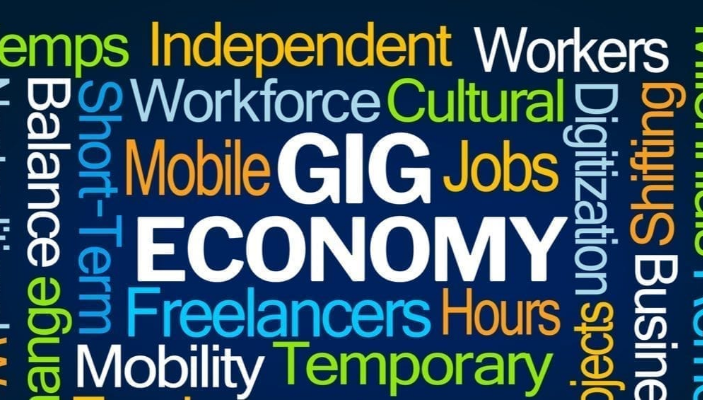As we step further into 2025, fitness has become more than just gym memberships or diet fads. It’s evolving into a personalized, tech-supported, and behavior-focused practice that centers on sustainable well-being.
From smart wearables to guided strength programs and mindful movement, people are reshaping fitness around routines that fit real lives—not rigid schedules.
This guide is written for people who want sustainable results. Whether you’re returning after a break, starting fresh, or looking to upgrade your routine, we’ve included strategies, tools, and trends that align with real goals—not gimmicks.
Why Fitness Goals Look Different in 2025
Fitness in 2025 isn’t just about aesthetics or chasing after unrealistic ideals. It’s about function, resilience, and emotional balance. Most importantly, it’s shaped by:
- Personalization through data
- Mental wellness integration
- Time-efficient movement
- Science-backed habits
- Inclusive, accessible tools
You don’t need to fit into the fitness industry’s old narrative to feel good. In fact, the most successful routines now focus on flexibility, progress tracking, and enjoyment.
1. Building Smarter, Flexible Fitness Routines
Ditching the “All or Nothing” Mentality
People who succeed with fitness in 2025 aren’t doing two-hour gym sessions every day. They’re adjusting their routines weekly to fit their lives—without guilt. Whether you have 10 minutes or an hour, consistent movement matters more than perfection.
Popular approaches include:
- Micro workouts (10–15 mins)
- Stacking movement into daily routines (e.g., walking during calls)
- Rotating between intensity levels based on energy and recovery
Flexibility is now seen as a form of discipline, not a weakness.
2. Using Tech That Supports, Not Distracts
Personalized Data That Motivates Without Pressure
Smart wearables have come a long way. In 2025, fitness tech isn’t about obsessing over numbers—it’s about using actionable data for better choices.
Popular integrations:
- Heart rate variability tracking to guide rest days
- Sleep quality scoring to improve workout performance
- Movement reminders that fit your natural rhythm
- AI fitness apps that adapt to your goals dynamically
Instead of pushing you to burnout, good tech nudges you toward sustainable consistency.
3. Mental Health and Fitness: A Seamless Pair
Emotional Fitness Is Just as Vital as Physical Strength
People in 2025 aren’t separating their physical health from mental well-being. Many fitness programs now include:
- Mindful warmups and cooldowns
- Breathwork integrated into strength training
- Low-intensity sessions focused on mental clarity (like walking meditations)
Fitness is increasingly recognized as a regulator of emotion, not just weight.
Working out in silence, focusing on your breath, and finishing with a gratitude note or short journal entry has become part of daily routines—not just for yogis, but for lifters, runners, and beginners too.
4. Protein, Hydration & Nutrition: Foundational Fuel
Focus on Real Food and Recovery
Nutrition is no longer seen as just “cutting carbs” or “boosting protein.” In 2025, people are prioritizing energy-supporting foods, hydration, and muscle recovery.
What’s changed:
- Protein timing is now adjusted based on workout windows
- Hydration goals are personalized using smart bottles or trackers
- Recovery supplements (like magnesium, omega-3, adaptogens) are common
- Anti-inflammatory meals are popular for longevity and energy balance
Rather than restrict, most plans emphasize fueling performance and clarity, not punishment or guilt.
5. Home-Based and Hybrid Training Still Leads
Convenience and Control Keep People Motivated
While gyms remain important, home fitness isn’t going anywhere. In fact, hybrid models are growing—where users do a mix of:
- At-home strength training
- Outdoor movement like walking or running
- In-gym personal training or classes once per week
Thanks to virtual fitness platforms and smart mirrors, people get professional guidance without commuting, saving hours each week.
6. Strength Training for All Genders and Ages
From Teenage Girls to Aging Adults—Muscle Matters
In 2025, muscle health is a universal goal. It’s no longer limited to bodybuilders or athletes. Everyone—from teenagers to seniors—is encouraged to train for:
- Bone density
- Hormonal balance
- Injury prevention
- Functional independence
Common methods:
- Resistance bands and kettlebells at home
- Smart dumbbell systems with form correction
- Guided routines tailored by age group and mobility levels
People aren’t chasing extremes; they’re pursuing strength for longevity.
7. Group Accountability and Social Movement
Fitness Has Become More Connected—Even at Home
Whether through social media check-ins, neighborhood walking clubs, or digital accountability pods, shared movement keeps people engaged.
Apps now offer:
- Group progress dashboards
- Shared goals with friends
- Virtual workout rooms for accountability
For many, motivation comes from shared progress, not isolation. This trend reduces drop-offs and promotes consistency without pressure.
8. Fitness for Neurodiverse and Disabled Communities
Accessibility Is No Longer an Afterthought
In 2025, inclusivity is central. Platforms are now designed with mobility, sensory processing, and cognitive accessibility in mind.
This includes:
- Low-sensory workout environments
- Visual guides for neurodiverse learners
- Adaptive equipment recommendations
- Voice-guided routines for visually impaired users
Fitness is finally being built for everyone—not just a narrow demographic.
9. Movement Recovery: Foam Rolling, Sleep, and Active Rest
Recovery Is Now Seen as Training
Sleep, rest, and mobility practices are no longer optional extras—they’re integrated into every smart routine.
Popular in 2025:
- Guided foam rolling sessions
- Stretching routines paired with calming audio
- Massage guns with AI pressure feedback
- Sleep coaching through wearables and habit stacks
People don’t “push through pain” anymore—they respond to it, adjust, and rebuild.
10. Fitness Trends Worth Paying Attention to in 2025
What’s Driving Results Without Gimmicks
Here are trends that have genuine traction—and real-life results:
| Trend | Why it Works |
|---|---|
| Time-blocked walking breaks | Enhances focus and metabolism |
| Smart dumbbell systems | Adjust weight based on fatigue |
| Biometric sleep feedback | Guides workout intensity each day |
| AI-customized routines | Reduce guesswork, increase consistency |
| Hormone-aware training cycles | Optimizes performance for women |
These tools are effective because they work with your body—not against it.
Final Thought: Fitness That Fits Your Life
Fitness in 2025 is no longer defined by six-packs or boot camps. It’s defined by how well you move, think, sleep, and function daily.
Whether you train at home with resistance bands or at a gym with barbells, the goal remains the same: consistency over perfection.
Success now looks like this:
- Showing up when it matters
- Resting when you need it
- Moving with intention
- Fueling your body kindly
- Celebrating small wins
And most importantly—choosing what works for your life, not what looks good online.
FAQs
1. How often should I work out each week in 2025?
Aim for 3–5 sessions per week, combining strength, mobility, and low-intensity cardio. Consistency beats volume.
2. Is home fitness still effective compared to the gym?
Yes. With smart equipment and guided routines, home workouts offer comparable results, especially for general strength and mobility.
3. What’s the biggest fitness trend in 2025?
Personalized fitness via AI-guided routines and smart wearables is one of the most widespread trends.
4. How do I avoid burnout in my fitness routine?
Include rest days, hydration, and variety. Adjust intensity based on how you feel—not just a rigid calendar.
5. Are short workouts really enough?
Yes. Research and practical results show that 10–20 minutes daily of focused movement supports long-term health if done consistently.







